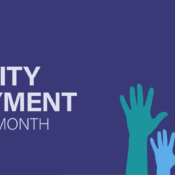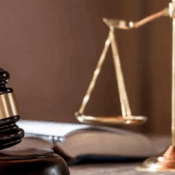
The Double-Edged Sword of Speaking for Yourself as a Deaf Individual
Every April for the past five years, I've had the privilege of leading an in-depth discussion with over 300 medical students from the University of Illinois Chicago Department of Medical Education's three campuses on considerations and best practices to drive the patient experience for Deaf and hard of hearing individuals. This session is an integral part of the school’s transition to clerkship program, a series of sessions designed to prepare students for their clinical rotations.
Just this past week, I was scheduled to present in-person to two groups of approximately 100 students each. Two of my preferred interpreters were scheduled for the presentations.
On the morning of the presentation, one of the interpreters contacted me to inform me that she, her husband, and daughter had fallen ill, potentially with norovirus.
Unfortunately, with only a few hours to spare, we weren’t able to secure another interpreter that I felt comfortable with having voice-interpret my presentations.
While I am bilingual in American Sign Language (ASL) and English and often speak for myself, I generally prefer to sign during these types of presentations. ASL is my primary and preferred language. Additionally, it feels more natural and appropriate to me to discuss this topic while signing. Speaking for myself can perpetuate a myth that all Deaf and hard of hearing individuals can speak for themselves. Signing allows students to directly observe the dynamic and collaborative relationship between a Deaf individual and interpreters, which I find particularly valuable for their learning.
This unexpected absence threw a curveball into my plans and required me to decide how best to proceed.
The second interpreter scheduled for the presentation assured me she would support whatever decision I made.
I worried that even though this interpreter was very skilled, interpreting for 2.5 hours straight by herself, with only a 15-minute break between two 75-minute sessions, would not be ideal. The best practice for interpreters in these types of situations is typically 20 minutes 'on' and 20 minutes 'supporting'.
I started each presentation by signing and then transitioned to speak for myself during the duration of the session. As part of my introduction, I shared that we had two interpreters scheduled, but one wasn’t able to join us due to being sick. I also emphasized that one size does not fit all with respect to communication needs and preferences.
All went well; students were actively engaged throughout the presentations and asked thought-provoking questions.
Having the ability and privilege as a Deaf person to clearly speak for myself was helpful the day of my presentation; however, there are times where it can be a double-edged sword.
Hearing people have often told me that I have great speech, typically not realizing the years of speech therapy I underwent.
Yet, there are still some words that I don’t feel comfortable saying out loud, largely due to the idiosyncrasies of the English language.
Meanwhile, I am more comfortable signing (if necessary, fingerspelling) or writing these words.
With an interpreter, I feel more at ease and can simply express myself without having to occasionally find substitutions for the words that I would prefer to say or have the interpreter interpret from ASL into spoken English.
With an interpreter, I feel more at ease and can express myself directly without having to occasionally find substitutions for words I would prefer to say.
When discussing #TheDDBHHTax, also known as the Deaf, DeafBlind, and Hard of Hearing tax, with other Deaf or hard of hearing individuals, the conversation about interpreters often revolves around the fatigue of constantly ensuring the interpreter accurately voices what is being signed. This often leads to these same individuals saying, “You’re lucky you can speak for yourself and don’t have this issue.“
I respond by sharing my own experiences and pointing out that others regularly have to put in the extra effort to decide which words to say when speaking for themselves.
The response is often “I did not know that!”
Ultimately, this shows that Deaf and hard of hearing individuals’ communication preferences and modalities used to communicate can vary from one situation to the next.
My experience this past week, while successful, served as a potent reminder that although a Deaf or hard of hearing individual's willingness to speak can provide flexibility, it does not negate the fundamental necessity of accessible communication and the indispensable role of skilled interpreters. It also underscored the delicate balance and careful considerations that often affect communication for Deaf and hard of hearing individuals. What may appear to be a convenience – an individual speaking for themselves – is often informed by personal history and ongoing considerations.
Consequently, when engaging with someone who is Deaf or hard of hearing, it is important to recognize that their chosen communication method is likely a deliberate one.
It is my hope that sharing these experiences cultivates a greater understanding that communication access is not a monolithic solution, and that empathy is the crucial first step towards genuine inclusivity.



